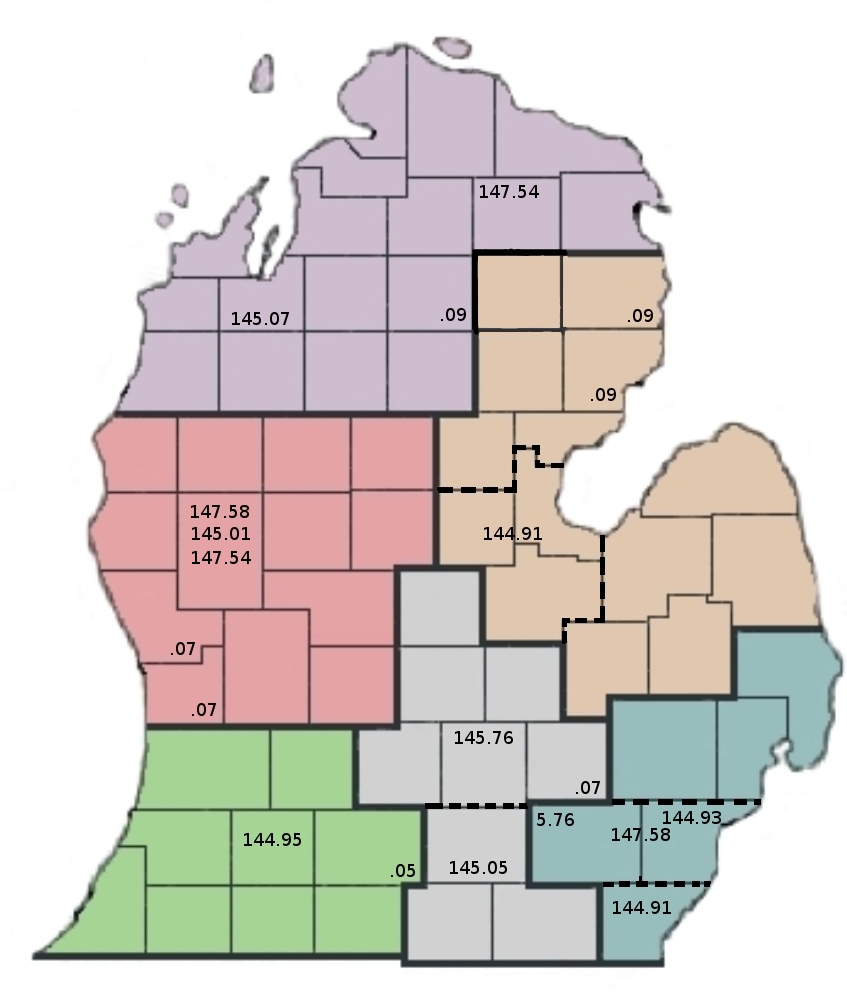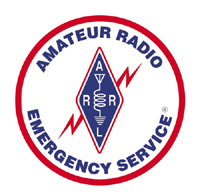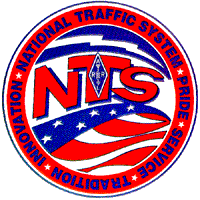Working Groups / Operational Standards:
The DRG holds periodic Working Group sessions where those knowledgable on a particular topic will discuss and document the current common best practices for any given mode of communications. A brief summary of their work is posted in the Working Group / Operational Standards area of this website. As new topics of discussion come up, the associated group will form and begin work on documenting information that should prove useful to anyone operating on that mode or protocol.
This URL link provides access into the Working Group - Standards webpages covering all sorts of topics such as Frequencies, SSID's, Node Names, Hostnames, WinLink addresses, 3-letter county abbreviations, county numbers, suggested JNOS/Hamgate/Knet/NetROM/BPQ configurations, D-Star/D-Rats/DMR/P25 settings, etc.
Worldwide AMPRnet Resources:
The official AMPRnet resources can be found below. Though you may find this website much more informative, particularly when it comes to the Michigan AMPRnet in particular.
- Web: www.ampr.org
- Wiki: wiki.ampr.org
- Portal: portal.ampr.org
- 44Net mailing list: mailman.ampr.org/mailman/listinfo/44net
- Documentation: NOSintro Book By: Ian Wade in PDF format (361 pages)
Michigan Packet Frequencies:
The following are Packet Radio Frequencies that are protected by the MARC (Michigan Area Repeater Council) are as follows:
From the MARC website: ====================== For packet operations, the following channels will be protected for coordinated operations. 2 meters ======== 144.910, 144.930, 144.950, 144.970, 144.990 145.010, 145.030, 145.050, 145.070, 145.090 145.510, 145.530, 145.570, 145.590 145.610, 145.630, 145.650, 145.670 145.710, 145.730, 145.750, 145.770 147.540, 147.560, 147.580 (Note that 145.76 is *NOT* protected and also lays outside the RACES sub-band, so RACES should *NOT* have any Packet activity on that frequency. ARES and general Amateur radio use is permitted.) 1.25 meters =========== 222.340 - 222.360 / 223.940 - 223.960 Repeater input/output 223.520, 223.540, 223.560, 223.580, 223.600 (Note that 223.4 and 223.44 are *NOT* protected, but are common Packet frequencies.) 70 centimeters ============== -no frequencies are noted for Packet use- (Note that the GL-Net 9600 baud backbone frequency of 445.6MHz is within the "Voice links" sub-band) Band Plans for "Digital Communications" --------------------------------------- 903.00 - 906.00 915.00 - 918.00 1248 - 1252 1258 - 1260 1297 - 1300
- More specific MARC Standards can be found here .
- Where within Michigan various frequencies are being used, can be found elsewhere on the page.
Node Naming Conventions:
Node names are important. They should convey the purpose of the Node. Is it a HamGate gateway? Is it an EOC? Is it a Red Cross node? Is it a club station? Is it a home station? Does it provide particular services or access to services?
These are all important considerations when selecting a Node Name. In the NetROM world, it is preferable to know what State the node is in, since the NetROM/BPQ networks are nation wide, and world wide. So they may be prefixed with "MI" then followed by the City, or Service, or Callsign. i.e. MIEOC58 (Michigan, EOC in Monroe county)
A HamGate is a gateway server (the "default gateway") between a county IP subnet and the rest of the world AMPRnet network. Only a true HamGate carries that name, i.e. Hamgate.Washtenaw (the HamGate serving Washtenaw county). While stations located inside an EOC (Emergency Operations Center) need to identify *which* county they are in, so they may be identified with either a 3-letter county identifier or sometimes they use their county number (from an alphabetical list of counties). i.e. MIEOC81 or EOCWAS or if it is not NetROM/BPQ )limited to 6 character names) could be EOC-Washtenaw.
Here is a listing of Michigan Counties alphabetically, including their 3-letter name abreviations: County 3-Letter Abreviations & County Numbers
The more consistant we name our nodes, the easier it is to find the resource or service we are looking for.
Michigan AMPRnet Realtime Monitoring:
My favorite saying is "You Cannot Manage what you Cannot Measure", because without accurate information you have no idea how things are really operating and therefore cannot manage them very well. So long ago I (wb8tkl) wrote a Bash script that monitors every Hamgate and many Key Stations throughout the Michigan AMPRnet. It does this automatically once every 2 hours. The tests verify that the Hamgate is pingable via its Public IP address, is also pingable via its 44-Net IP address, and in many cases we also check to see how long the node has been up (has it rebooted recently) and how much Free Memory it has available. This last test is critical on the DOS-based Hamgates which have a very limited RAM resource.
The final report is pushed out to the webserver and made available to eveyone at the URL below:
How to get an IP Address assignment in AMPR.ORG (44.102/16):
In order to operate JNOS TCP/IP over the air, you must have an IP address assigned to you in the 44/8 address space. Here in Michigan that address would be out of the 44.102/16 space. Within Michigan each county has been assigned a number of /24 subnets (256 addresses each) for use by the Hams that live within those counties.
An assignment may look something like: wb8tkl.ampr.org 44.102.1.16
The address tells me that WB8TKL is in Washtenaw county (44.102.1) and his host address is 16. There is a Hamgate in Washtenaw county that acts as the default router for the surrounding area that routes for 44.102.1/24, so WB8TKL can expect that his packets can reach anywhere around the world via this gateway/Hamgate. So WB8TKL sets his route to 44/8 to gateway via 44.102.1.1 (the Hamgate address) and he also sets up a Net Route such as 44.102.1/24 to go out to his RF port so he can reach his fellow Hams on this subnet directly over RF.
But without an individual IP address, WB8TKL ain't gettin' nowhere! So one must be assigned. Use the tools below to obtain a proper IP address and Hostname assignment for your station.
Request an IP Address Assignment via the Portal.AMPR.Org web tool. Follow the steps outlined below to make a request for a Single IP (for a home station) or to allocate a Subnet (for a Hamgate).
Dave N8IT will then process your request. He will email you for clarification or additional information if needed:
- Go to PORTAL.AMPR.ORG with your browser and create an account, if you don't already have one
- Click on Networks on the dark menu bar
- In the blue table, select 44.0.0.0/9 UNITED STATES
- In the next blue table, select 44.102.0.0/16 Michigan N8IT
- Below the blue table there is a paragraph ending with 44.102.0.0/16, click on it.
- You will now be presended with a form:
- Under Network Details, set the Netmask requested to /32 for a single IP address request (home station) or /24 to request a subnet for a Hamgate/gateway.
- Under Network Details, Type:, leave it set to End User
- Under Connection Details, check the box next to Radio:
- Leave all the other fields EMPTY
- Describe your request in the Notes: box. Please note what Michigan County you are in (or what subnet you wish to be a part of)
- Now click the SEND button
- Dave N8IT will now manually process your request and email you the results.
USE ONLY IF ALL ELSE FAILS -- Request an IP Address Assignment in AMPR.ORG, and I'll (Jay WB8TKL) forward the data on to Dave N8IT. But try to work with the new IP Address Coordinator, it's not my job any more (grin).
JNOS & Hamgate Support Files:
Home JNOS stations are basically the same as a Hamgate, but do not require routing to the Public Internet nor do they use the ENCAP.TXT routing table. Only Hamgates require a static routable IP address on the Public Internet, this is because they are *required* to be reachable by every other Hamgate/gateway in the world. They do this by Encapsulating 44-net packets inside the payload of packets sent over the Public Internet. Hamgates *must* maintain a current copy of the ENCAP.TXT "route table" that defines a route to every other Hamgate/gateway in the world. Whew! Aren't you glad that your home station is so simple!?!?!? Here is a collection of files specific to each type of JNOS installation:
- ***** FILES USED BY BOTH JNOS & HAMGATE STATIONS *****
- Download The Raspberry Pi-JNOS project installation documentation (PDF)
- Or you may view the web-based Installation Manual
- Download the Raspberry-Pi/TNC-Pi image (.zip 493MB from ares-mi.org website)
- Download Raspberry Pi-JNOS for Raspberry-Pi/TNC-Pi (version 1.5 from jjmcd's personal site)
- ***** FILES USED IN JNOS HOME STATIONS *****
- The "Standard" AUTOEXEC.NOS for JNOS running on DOS
- The "standard" AUTOEXEC.NOS for JNOS on Linux (uses TUN0 between Linux and JNOS)
- The access3.rc IP ACCESS firewall rules used in DOS/JNOS (can be ported to Linux/JNOS with some edits)
- ***** FILES ONLY USED IN HAMGATE NODES *****
- Example AUTOEXEC.NOS file
- Latest ENCAP.TXT worldwide routing table. (updated at 10am & 10pm ET)
- Latest Michigan-Only MI-ENCAP.TXT routing table. (updated at 10am & 10pm ET)
- Edits to Raspberry Pi-JNOS to convert it into a Hamgate
- ***** MISCELANIOUS *****
- Latest HOSTS.NET
- Latest DOMAIN.TXT
- RIP routing updates via the ampr-ripd daemon, available at http://44.60.44.10/amprnet_docs
- DRG Handout (PDF)
Frequencies Used Around Michigan:
Using the same frequency over a large geographic area, though this makes for a very easy network topology to deploy, carries with it the well-known drawback of the "Hidden Transmitter" problem. This is the case when Station-A can reach Station-B, but Station-C cannot hear Station-A directly. Thus, A and C tend to transmit at the SAME TIME because they both believe the frequency is clear. Sadly, Station-B in the middle hears BOTH A and C and NOTHING gets through because of the collisions. A nd C are "Hidden Transmitters" to one another.
So we employ the technique of using one frequency over no more than one or two neighboring Counties. Then that frequency isn't used again until two or three counties away. This helps to alieviate the Hidden Transmitter problem, resulting in far fewer collisions overall, and provides some protection from neighboring networks when brand openings occur.

The map to the left is a bit out of date and several frequencies have changed since this map was produced. But generally it shows what Frequencies are being used in what parts of the State. The TEXT list below is much more accurate. All frequencies are AX.25 1200 bps half-duplex (Standard Packet) unless otherwise noted.
The following Frequencies are known to be in use in the following Counties:
144.91 MHz - Bay
144.91 MHz - Midland
144.93 MHz - Washtenaw
144.93 MHz - Wayne
144.93 MHz - Monroe
144.95 MHz - Oakland
144.97 MHz -
144.99 MHz -
145.01 MHz - Washtenaw 9600 baud
145.03 MHz -
145.05 MHz - District-1 South
145.05 MHz -
145.07 MHz - Antrim
145.07 MHz - Kalkaska
145.07 MHz - Grand Traverse
145.07 MHz - Benzie
145.07 MHz - Livingston
145.07 MHz - Leelanau
145.07 MHz - Ottawa
145.07 MHz - Muskegon
145.07 MHz - Manistee
145.09 MHz - Alcona
145.09 MHz - Iosco
145.09 MHz - Crawford
145.76 MHz - Eaton
145.76 MHz - Ingham
145.76 MHz - Livingston
147.54 MHz -
147.56 MHz -
147.58 MHz -
Hamgate, NetROM, BPQ, Key Station and Node Information:
| Last Edited: October 2nd, 2018 | |||||
| District | City | Hostname | Callsign | Frequency | Notes |
| D1 | Charlotte | EATON / HEECHA / HEERMS | N8HEE-5 | 145.76 | NetROM route into the SEOC |
| D1 | Lansing (Diamondale) | SEOC.AMPR.ORG / SEOC | WS8EOC-3/-4 | 145.76 | State EOC -- WS8EOC-3/bbs WS8EOC-4/node |
| D1 | Lansing | MI7LAN | W8CMN | 145.76 | NetROM route into the SEOC |
| D1 | Bancroft | MI7BAN | BANCFT-7 | 145.03 | |
| D2 | Dundee | WA8EFK.AMPR.ORG | WA8EFK-0/-4 | 144.93 | [GL Division Director] |
| D2 | Ypsilanti | Hamgate.Washtenaw.AMPR.ORG / HGWASH | WB8TKL-3/-4 | 144.93 | TELNET:Hamgate.Washtenaw.mi-drg.org |
| D2 | Ann Arbor | RedCross.Washtenaw.AMPR.ORG | WC8RC-3/-4 | 144.93 | Washtenaw Red Cross Comm-Center |
| D2 | Monroe | W8DWL | 144.93 | Monroe Red Cross Comm-Center | |
| D2 | Monroe | KD8DXV | 144.93 | Monroe County EOC | |
| D2 | Ida | Hamgate.Monroe.AMPR.ORG | K8RPT / RRRA Digi | 144.93 | Digipeater Only (Hamgate under construction) |
| D2 | Chelsea | MI7xxx | 145.76 | WPXD tower - high-profile ** UNDER CONSTRUCTION ** | |
| D3 | Harrisville | Hamgate.Alcona.AMPR.ORG / ALC01 | N8AVX-3/-4 | 145.09 | TELNET:Hamgate.Alcona.mi-drg.org |
| D3 | Mayville | MI7MAY | W8CMN | 145.09 147.54 | |
| D3 | EOC35 | 145.09 | Iosco county EOC | ||
| D3 | EOC73 | KD8KDP-4 | ???? | Saginaw county EOC | |
| D3 | EOC79 | 145.09 | Tuscola county EOC | ||
| D3 | Saginaw | SAGINW / MI7SAG | W8CMN-12 | 145.76 | |
| D3 | Midland | Hamgate.Midland.AMPR.ORG | W8KEA-3/-4 | 145.09 | (No Internet connection for IPIP Encap) |
| D3 | Midland | WB8RCR.AMPR.ORG | WB8RCR-3/-4 | 145.09 | [Section EC] |
| D3 | Midland | MIDNOD | NX8A-7 | 145.09 | |
| D3 | Saginaw | N8ERL-4 | N8ERL-4 | 145.09 | |
| D3 | Iosco | TAWAS | TAWAS | 145.09 |
TAWAS NODES HEARD -------------------------------- LAPEER (N8XP) EOC25 (KC8KGZ) TVC001 (KD8OXV-6) KD8TUV-7 (KD8TUV) WB8FYR-4 (WB8FYR-3) K8DDX-7 (K8DDX) W8DMI-7 (W8DMI) SAGINA (KC8YVF) MI7MAY (MAYVIL-5) Network (N8ERL-4) W8KEA-3 (W8KEA-4) EOC73 (KD8KDP-4) W8GDW-7 (W8GDW) ALPE00 (KD8RKL) K8DDX-7 (K8BD) WB8EOC-7 (WB8EOC) EOC35 (KD8HBK-4) ALPNET (KD8RKL-4) |
| D5 | Battle Creek | MIBTL | KC8KPM-7 | 145.09 | |
| D5 | Albion | MIALBN / OAKRMS / OAKCHT | KB8OAK-7 | 145.09 | |
| D6 | Grand Rapids | Hamgate.Kent.AMPR.ORG | Freq TBD | ** UNDER CONSTRUCTION ** | |
| D6 | Grand Rapids | RedCross.Kent.AMPR.ORG | WD8USA-3/-4 | Freq TBD | ** UNDER CONSTRUCTION ** |
| D6 | Greenville | MI7GRN | KD8RXD-7 | 145.01 | (radio & UPS down due to lightning hit) |
| D6 | Zeeland | OTTAWA / RSACHA / RSARMS | WA8RSA-5 | 145.07 | |
| D6 | Portland | MIPORT | K8VEB-5 | 145.09 | (MHEARD is Empty) |
| D7 | Alpena | ALPE00 | KD8RKL | 145.09 | |
| D7 | |||||
| D7 | |||||
| D8 | |||||
| D8 | |||||
| D8 | |||||
NOTE: If you telnet over the Internet from a Windows box, you will find that the telnet client that Microsoft provides has been "embraced and extended" until it is now quite broken. Get yourself a real telent client by downloading Putty.



